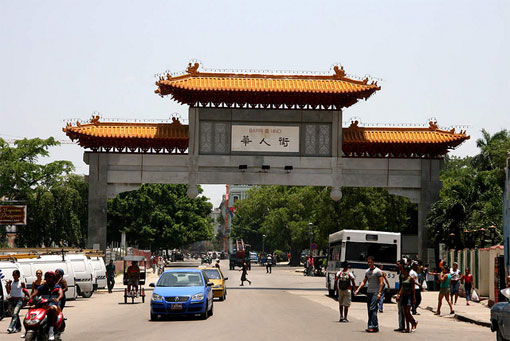Since officially taking over from his brother Fidel in 2008, Raúl Castro has introduced reforms in Cuba to begin what some hope will be a period of economic liberalization. But these reforms are not necessarily moving the island nation in the direction sought by the United States for half a century. Instead, as the balance of global power shifts East, the Cuban economy appears to be heading less toward the free market policies of Washington DC and more toward the state capitalism of Beijing.
For critics of these reforms, Cuba’s commitment to “updating the socialist system” is seen as justification for maintaining the 50-year-old status quo. Unlike China’s economic transformation, they argue, “nothing much will change.”1 Others view the Cuban government’s initial steps to unleash market forces as “a significant realignment of the paternalistic relationship that has existed between the state and its citizenry since the revolutionary period began in 1959.”2 As in China, the goal appears to be a mixed economy in which citizens follow their entrepreneurial dreams while generating tax revenue under the “supreme guidance of the state.”3
Cuba’s new economic path is not the one espoused by Western policymakers, who have long urged countries like Cuba and China to scale back their intervention in economic affairs. The 2008–2009 global financial crisis threw into question two decades of this advice. Today, China’s rise has institutions from the International Monetary Fund to the U.S. government questioning the appropriate balance between the state and the economy.
This global shift has made China’s experience relevant to the new Cuban economy. While the Chinese government may be Communist in name, it looks outward with a brand of pragmatism unknown to Cold War contenders. Its relations with Cuba demonstrate this pragmatism: for over a decade China has been advising the island to embrace private entrepreneurship, and to buy Chinese manufactured products. From refrigerators and televisions to public transport and hospital equipment, China’s impact touches the daily lives of most ordinary Cubans. China is now the island’s second largest trading partner, with bilateral trade reaching $1.83 billion in 2010.
Cuban purchases of Chinese electronic appliances, trains, buses, and light military vehicles are facilitated by credits provided by China during President Hu Jintao’s visits to Havana in 2004 and 2008. To consolidate and expand this scheme, Chinese Vice-President Xi Jinping and President of the China National Petroleum Corporation Jiang Jiemin visited Havana in June 2011 to establish the First Five Year Plan for Sino-Cuban Cooperation. Among the initiatives under negotiation are Chinese investments in Cuban oil and gas, expansion of education exchange programs (which currently accommodate some 100 Cuban and 2,000 Chinese students), and assembly of low-cost televisions, air conditioners and kitchen appliances. Other proposals include direct China Air flights between Havana and Beijing, and credits and loans to assist the expansion of Cuba’s emerging market economy.
Another challenge that has attracted Chinese attention is Cuba’s struggling supply infrastructure. The lack of adequately financed wholesale markets and supply chains constitutes a major constraint for Cuba’s new entrepreneurs. Without stable sources of supply, they must rely on contraband provided by socios (well-placed informal business partners) in state factories. This underlying problem is often overlooked by foreign critics, who have focused instead on the need to expand the number of authorized private occupations beyond the 186 approved in 2010. But without formal supply chains, such an expansion would be counterproductive since it would deepen illicit wholesale markets and undermine the broader reform process.
Cuba’s state-operated Office of the Historian of the City first sought to address this supply problem in 2006 when it oversaw the expansion of a controlled private sector in Havana’s Chinatown, complete with wholesale warehouses. Local Chinese canteens and restaurants had been informally sourcing supplies from unregistered agricultural producers on the outskirts of Havana since the district’s establishment 150 years ago. In 2005, Cuban authorities, after observing local entrepreneurs purchasing equipment for their restaurants and offices at the Fair of Canton in Guangzhou, China, introduced wholesale warehouses in Chinatown. The first of their kind in Cuba, these warehouses diminished the need for illicit trade, offering their patrons the security of an accessible and legal supply chain. Drawing insight from this experience, the Cuban government is now negotiating with Chinese suppliers to provide commercial credit for wholesale warehouses across the country.
Clearly, state-to-state cooperation with China has helped Cuba to establish the basic infrastructure it needs for economic growth. The challenge now facing the island is to use this platform to support private initiative and harness the productive potentials of the market. If the Cuban government emerges intact from the reforms it has initiated, Fidel Castro may yet look back triumphantly on his 1953 prophecy that “history will absolve me.”
ENDNOTES
1 José Azel (2011) “So much for Cuban economic reform.” The Wall Street Journal, 10 January.
2 Collin Laverty (2011) Cuba’s New Resolve Economic Reform and its Implications for U.S. Policy. Washington DC: Center for Democracy in the Americas, p. 4.
3 Yan Jirong (2011) “El ‘modelo chino’: ¿qué dicen las investigaciones?” Temas 66, pp. 12-16.








